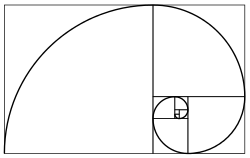1 − 1 + 2 − 6 + 24 − 120 + ...
In mathematics, the divergent series
was first considered by Euler, who applied summability methods to assign a finite value to the series.[1] The series is a sum of factorials that alternatingly are added or subtracted. A way to assign a value to the divergent series is by using Borel summation, where one formally writes
If summation and integration are interchanged (ignoring that neither side converges), one obtains:
The summation in the square brackets converges and equals 1/1 + x if | < 1. If we analytically continue this 1/1 + x for all real x, one obtains a convergent integral for the summation:
where E1(z) is the exponential integral. This is by definition the Borel sum of the series.
Derivation
Consider the coupled system of differential equations
where dots denote derivatives with respect to t.
The solution with stable equilibrium at (x,y) = (0,0) as t → ∞ has y(t) = 1/t, and substituting it into the first equation gives a formal series solution
Observe x(1) is precisely Euler's series.
On the other hand, the system of differential equations has a solution
By successively integrating by parts, the formal power series is recovered as an asymptotic approximation to this expression for x(t). Euler argues (more or less) that setting equals to equals gives
See also
References
- ↑ Euler, L. (1760). "De seriebus divergentibus" [On divergent series]. Novi Commentarii academiae scientiarum Petropolitanae (5): 205–237. arXiv:1202.1506. Bibcode:2012arXiv1202.1506E.
Further reading
- Kline, Morris (November 1983), "Euler and Infinite Series", Mathematics Magazine, 56 (5): 307–313, doi:10.2307/2690371, JSTOR 2690371
- Kozlov, V. V. (2007), "Euler and mathematical methods in mechanics" (PDF), Russian Mathematical Surveys, 62 (4): 639–661, Bibcode:2007RuMaS..62..639K, doi:10.1070/rm2007v062n04abeh004427
- Leah, P. J.; Barbeau, E. J. (May 1976), "Euler's 1760 paper on divergent series", Historia Mathematica, 3 (2): 141–160, doi:10.1016/0315-0860(76)90030-6
